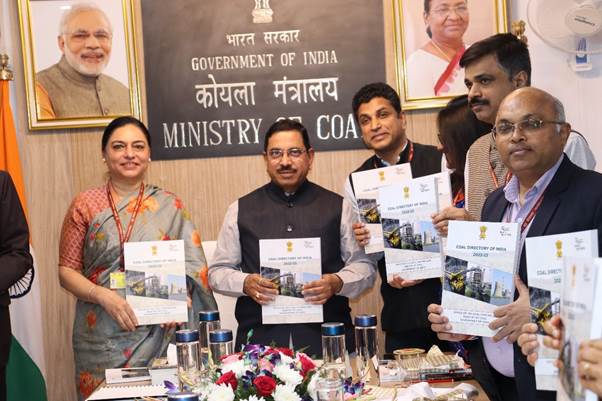The Ministry of Coal’s recent release of the “Coal Directory of India 2022-23” marks a significant step towards transparency, informed decision-making, and the sustainable development of the coal and lignite sector in India. This meticulously compiled annual publication, meticulously crafted by the Coal Controller Organization (CCO), serves as a cornerstone resource for researchers, policymakers, industry leaders, and various stakeholders invested in the future of this critical sector.
 While India actively pursues renewable energy sources to diversify its energy mix, coal remains an essential player in the nation’s present and near future. As one of the world’s fastest-growing economies, India’s energy demands are steadily rising. Coal currently fufulfilsearly half of the country’s total energy consumption, playing a vital role in:
While India actively pursues renewable energy sources to diversify its energy mix, coal remains an essential player in the nation’s present and near future. As one of the world’s fastest-growing economies, India’s energy demands are steadily rising. Coal currently fufulfilsearly half of the country’s total energy consumption, playing a vital role in:
- Ensuring energy security: Abundant domestic coal reserves guarantee a reliable and stable energy supply, crucial for powering industrial growth, urbanization, and meeting the needs of a burgeoning population. Coal-fired power plants are currently the backbone of India’s power generation capacity, and they play a critical role in meeting peak electricity demands, especially during hot summers.
- Maintaining grid stability: Coal-fired power plants provide a stable base-load electricity supply, essential for ensuring the smooth operation of the national grid and meeting the growing energy demands of industries, businesses, and households across the nation. Unlike renewable energy sources like solar and wind, which are variable and intermittent, coal-fired plants can consistently generate electricity, providing the necessary foundation for integrating renewable energy sources into the grid.
- Generating employment: The coal mining industry directly and indirectly supports millions of jobs, particularly in regions with abundant coal reserves, fostering economic development and providing livelihoods for countless individuals and communities. These jobs often provide a crucial source of income and stability in regions where other employment opportunities might be scarce.
- Driving industrial development: As a vital raw material, coal underpins the operations of several key industries such as steel, cement, and fertilizer production, forming the backbone of numerous manufacturing processes. The steel industry, a vital pillar of India’s infrastructure development, is heavily reliant on coal as a key input for steel production.
- Contributing to government revenue: Revenue generated from coal mining activities, including royalties and taxes, contributes substantially to government coffers, enabling critical investments in social and infrastructure development projects across the nation. These funds are used to finance vital initiatives such as education, healthcare, and rural development, particularly in areas where coal mining activities take place.
Recognizing the crucial role of data in informed decision-making, the “Coal Directory of India 2022-23” offers a comprehensive repository of vital data. This publication delves into various aspects of the coal and lignite sector for the fiscal year 2022-23, providing detailed insights into:
- Coal reserves: Offering a clear picture of the available resources, allowing for informed planning and exploration strategies, including the identification of new coal reserves and the assessment of their feasibility for extraction. This data can inform decisions regarding future mining projects, investments in exploration activities, and the development of a long-term strategy for sustainable coal resource management.
- Production and productivity: Enabling stakeholders to assess the sector’s efficiency and identify areas for potential improvement, such as the adoption of new technologies or more efficient mining practices. This data can inform investments in mine modernization, skill development programs for miners, the implementation of sustainable mining practices that minimize environmental impact, and the improvement of overall safety standards within the mining industry.
- Pit-head closing stock: Providing crucial information for inventory management and logistics optimization, ensuring a smooth supply of coal to meet the demands of power plants and other industries. This data can inform decisions regarding stockpiling strategies, transportation infrastructure development, and logistics planning to minimize disruptions in the coal supply chain and ensure that power plants and industries have reliable access to the coal they need to operate efficiently.




